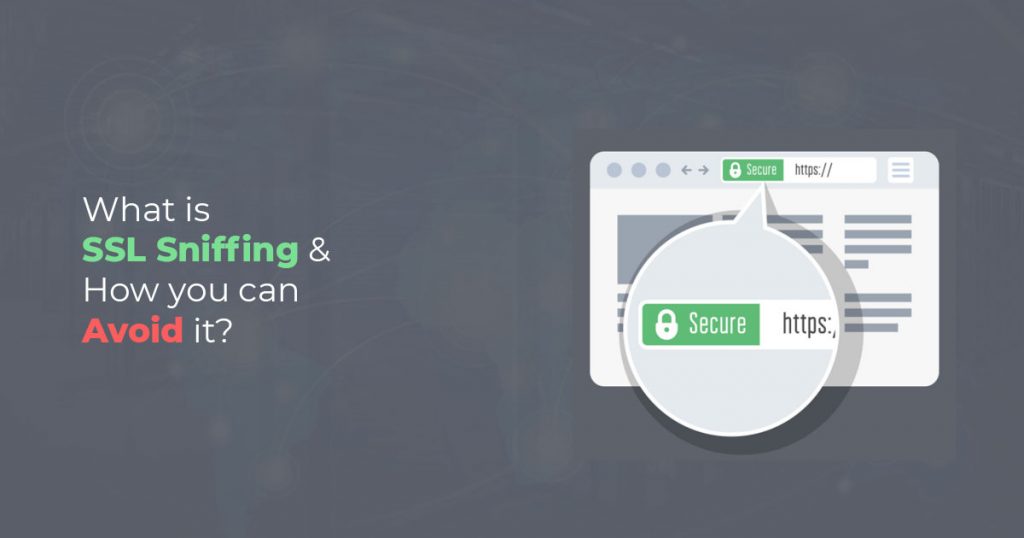Since the IOT turns out to be increasingly more secure, cybercriminals are compelled to consider new strategies for catching and stealing delicate information. They exploit the current cyber security tools and attempt to mislead clients to rely on them. Along these lines, this article will assist you with discovering what is SSL Sniffing attempt. It will likewise tell you the best way to shield your SSL connection from it.
On the whole, we should give a reading to TLS/SSL termination proxy.
A TLS/SSL end termination proxy is a proxy server which is especially utilized by an entity to intercept and handle incoming TLS/SSL connections, decode the TLS/SSL, and afterward give the decoded request to one of its exceptionally secure servers, for example, Apache HTTP Server, Nginx or HAProxy.
The reason for having a TLS/SSL termination proxy is to decrease the load on the entity’s main server. In any case, before executing this proxy, the entity ought to guarantee that its network is secure and it does not have to encode the session data for its clients.
Unluckily, cybercriminals have figured out how to utilize the abilities of a TLS/SSL termination proxy to sniff secure GeoTrust True BusinessID SSL links. They can now effectively intercept the messages exchanged within it.
What is SSL Sniffing?
SSL Sniffing is a malignant cyber-attack when a TLS/SSL termination proxy acts as a MitM intermediary which seizes the protected SSL link. Why MitM (man-in-the-middle)? Since an intermediary is by definition a man-in-the-middle third party. The proxy connects to the server and afterward the customer connects with the proxy.
You may definitely realize that Comodo Instant SSL Certificate prevent MitM assaults. Why that MitM can intrude and sniff a SSL connection?
To sniff the SSL connection, the MitM proxy goes about as an untrusted Certificate Authority. The MitM proxy dynamically produces SSL Certificates to whatever hostname is required for building up the SSL association. For instance, if the program needs to interface with https://www.mywebsite.com, the MitM proxy will create a SSL Certificate for “www.mywebsite.com” and sign it similar to autonomous CA.
By intentionally acting about as a different CA, the malevolent MitM proxy exploits this chance and endeavors to attempt a trusted SSL association. Along these lines, when the program attempts to associate with the web server. The MitM intrudes by issuing and signing its own certificates subsequently, while the MitM proxy receives the first SSL Certificate of the server, the program gets the phony SSL certificate issued by the MitM proxy.
What is SSL stripping?
Basically, SSL stripping downgrades a HTTPS (Hyper Text Transfer Protocol Secure) connection with one that is HTTP (the now outdated, less secure protocol).
Through an intermediary, a hacker – the “man-in-the-middle” of a connection – catches all client request made to a site’s server. As opposed to interfacing with a safe site, clients are rerouted to the unsecure proxy server. Most clients won’t realize that the redirect has happened because they will wind up on a page that looks virtually similar as the one they were scanning for.
Along these lines, SSL stripping is more advanced than phishing. Phishing requires a client to sign in to a phony page which permits the attacker to gather information like client name and password.
SSL stripping guides a client to a HTTP proxy that is related with a genuine HTTPS-encrypted site. The attacker can gather logins and passwords through the HTTP connection without the victim noticing anything. The victim will not see an error or cautioning message in their browser alerting them to the reality they have been rerouted.
Having taken off the Secure Sockets Layer (SSL) that secures a client’s secret data, a hacker can eavesdrop and manipulate data as well
Following comes the crucial part of a SSL Sniffing attempt:
How to maintain a strategic distance from SSL Sniffing?
The browser that links to the server, however it links with the MitM proxy. Here comes the hiccup: for the sniffing to occur, the program must acknowledge this proxy as a real, trusted CA.
If by chance that the client disregards any security alerts and acknowledges the phony SSL Certificate and the MitM proxy CA trusted. The client will effectively associate with the MitM proxy, start the SSL Sniffing and the SSL connection will get insecure
Let’s suppose the client didn’t introduce any noxious software. At the point when its browser gets the phony SSL Certificate. The program will show a security message cautioning clients to not confide in the issuer of SSL Certificate. Furthermore, one needs to know whether to incorporate the phony MitM proxy certificate to its list of trusted certificates. By dismissing the above solicitation, the client stops the SSL Sniffing endeavor, effectively securing its protected SSL link.
Unluckily, if attacker hacked the client’s PC and introduced a virus. The program may rely in the MitM intermediary as a valid CA. This whole procedure for the most part occurs in the background and is imperceptible to the client. Hence, it is vital to protect your PC with a reliable anti-viral software.
If you have an anti-virus software securing your PC. Then your web browsers will alarm you about the untrusted Certificate Authority and its certificate. It would be ideal if you be cautious and don’t confide in any pernicious MitM proxies. Continuously check the SSL declaration and its Certificate Authority if there should arise an occurrence of uncertainty. A SSL Sniffing attack is just conceivable because of clients’ naïveté. For instance, “I’ll simply click OK to finally visit that site”.
Last considerations
Recall that the reason for a SSL Certificate is to make sure about the connections among you and the web server. This is the reason you ought not permit any outsider interventions. SSL Sniffing may occur if you disregard the alerts or make your PC susceptible to viruses and malware. Try to stay away from any of these events.

